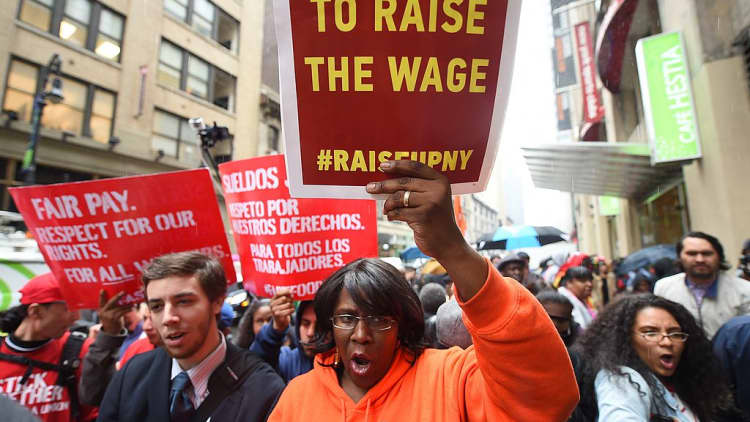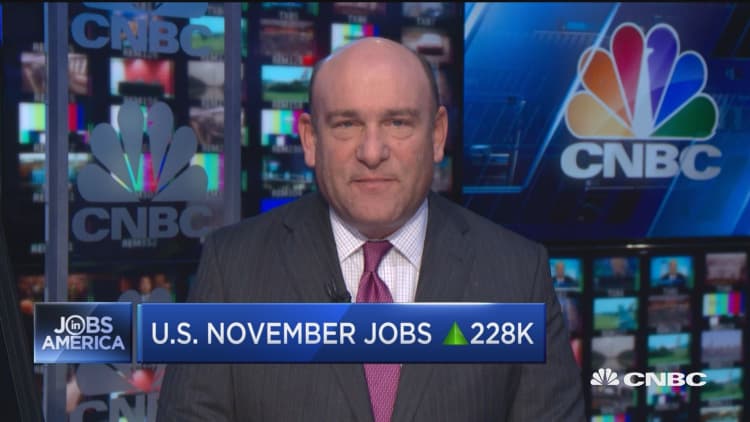
Despite a mostly solid run of job growth, 2017 ends pretty much where it began — with a two-speed economy where wage growth is funneling to one end while the other lags behind.
Friday's nonfarm payrolls report brought with it news all too familiar to the post-crisis economy. The 228,000 jobs created formed a solid foundation, but the pedestrian 2.5 percent average hourly earnings growth left many scratching their heads wondering how a 4.1 percent unemployment rate, the lowest in 17 years, still wasn't producing fatter paychecks.
"The lack of wage growth at the aggregate level despite the declines in the unemployment rate and strong job gains remains a mystery," Joseph Song, U.S. economist at Bank of America Merrill Lynch, said in a note to clients.
"One possible explanation is that structural factors such as unfavorable demographics and industry-specific dynamics are playing a bigger role than the cyclical factors," he added. "However, we continue to believe that a falling unemployment rate will ultimately underpin wages."
The latter part of that statement represents the hopes and frustrations of economists everywhere from academia to Wall Street to the halls of the Federal Reserve in Washington, D.C.
With another month of strong job gains and ho-hum wage growth under its belt, 2017 is now yielding toward predictions — again — that the year ahead will finally be the one where income catches up.
"Due to a lack of available workers and sustained improvement in aggregate demand we expect wage pressures to be the primary economic narrative during the year," said Joe Brusuelas, chief economist at RSM. "Our forecast implies that wage growth during final three months of next year should be at or near 4 percent."
No less than Gary Cohn, director of the White House's National Economic Council, was banging the same drum Friday morning after the jobs report hit.
"As the economy continues to grow and we bring more businesses back to America, we'll create more competition for labor so we'll continue to see more wage growth over the next cycle," Cohn said on CNBC's "Squawk on the Street."
It might not be that simple.
The Trump administration sees one of the answers to the wage puzzle as simply providing more supply of business demand against a shrinking pool of workers.
But American business is faced with a unique challenge in that employers are having a hard time finding the right workers for the positions they have open. That issue has been reflected in the periodic summaries the Fed releases of economic conditions across its districts, and is on the minds of those on the front lines trying to match skilled workers with open jobs.
"From a wage standpoint, skills are the new currency," said Chris Layden, vice president of Manpower North America, a workforce solution business that helps companies find suitable workers. "We're seeing the emergence of a skills revolution. Technology is transforming how work is getting done.
"Those skills are seeing rising pay. Those that [don't have skills] are getting left behind."
Training and internships have been stressed in recent years as a way to bridge the gap. But even those kinds of programs are falling short.
Layden said that until all sides synchronize in the fight against wage stagnation, the picture of the last several years likely will remain unchanged.
"Where we see programs most effective are really where they are bringing all stakeholders to the table," he said. "Employers are leading this and are being very clear on the jobs they need. Training for training's sake doesn't work. We need training for a job."
WATCH: Now for the good news about the jobs numbers.



